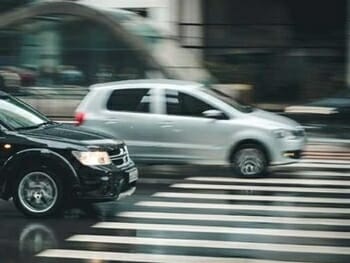
Are autonomous vehicles safe for our public roads? The March 2018, death of a pedestrian near Phoenix, Arizona, would seem to indicate they may not be. The victim was walking her bicycle across the road when she was struck by an Uber SUV. Autonomous vehicle data, which the public interest group Consumer Watchdog says was ignored by the NHTSA, show that self-driving cars truly cannot drive themselves for any length of time. Consumer Watchdog’s late March report, which used data released by the California DMV, states that autonomous vehicles can travel a maximum of 5,596 miles, at best, before needing human intervention.
Human Intervention Once Every Mile
Almost six thousand miles between interventions might not sound bad. But many other documented situations show that a number of autonomous vehicles need intervention at many fewer miles. According to one analysis firm, of the six companies testing autonomous vehicles in Arizona, Uber was by far the worst. Their vehicles experienced what’s known as a “disengagement”—meaning a human being is forced to take control of the vehicle—once for every mile driven, on average.
At the top of the research listing was Waymo (a Google company), which experienced one disengagement every 5,128 miles driven. In the middle was Nissan, with one disengagement for every 146 miles driven out of 4,099 miles driven. Mercedes, Tesla, and BMW also beat Uber’s dismal disengagement rate, though these three had not performed more than 1,000 miles of testing in the previous 12 months.
Requiring human intervention every single mile is a far cry from once every 5,596 miles, Consumer Watchdog’s figure.
“We Saw This Coming”
The person behind the wheel of the Uber autonomous SUV that hit the pedestrian worked as a “safety” or backup driver—someone who can put the autonomous vehicle to rights when it stops working properly. But the driver did not have their hands on the wheel, nor did they appear to be paying close attention, split seconds before the fatal impact. A long list of research studies have demonstrated that, when people must watch for impossible-to-predict events, no matter how easy they could be to spot, the person’s performance suffers more the longer they must watch. It’s called the “vigilance decrement.” It’s a risk for lifeguards, TSA agents, and those who watch nuclear reactors, among others.
In interviews, two ex-safety drivers for Uber agreed that their jobs led to dangerous temptation not to pay full attention because of fatigue. Ryan Kelley, who said he was proud of the 30,000 to 40,000 safe autonomous miles he logged with Uber (he no longer works for the company), commented about the recent death, “We saw this coming.”
Where to Next?
An advocate at Consumer Watchdog, Sahiba Sindhu, claims that the ”NHTSA wants to appease robot car manufacturing corporations by skipping crucial steps for public safety so that robot cars can hit the market as fast as possible.”
History has shown that automobile manufacturers often do not implement safety standards unless they are pressured into doing so. The NHTSA, in fact, was established to correct such problems that occur when manufacturers are allowed free rein. In the case of autonomous vehicles, the regulatory agency may have fallen down on the job. Other Consumer Watchdog comments noted, “We forget that vehicle safety technologies are ubiquitous today not because of car manufacturing companies but in spite of them. Automobile companies historically lobbied against the safety regulations (e.g. airbags) NHTSA created. Cars are safe today because of NHTSA’s strong history of holding automobile manufacturers accountable for public safety through comprehensive safety regulations.”
For now, all autonomous vehicle testing on U.S. public roads appears to have been halted. Perhaps we should slow down, take a deep breath, and reconsider whether these vehicles truly are ready for our public streets.
Motor Vehicle Crash? Turn to Steve Heisler, The Injury Lawyer
The Law Offices of Steven H. Heisler has been helping injured people in Maryland for more than two decades with all types of vehicular accidents. Steve’s thorough investigation will uncover the many potential defendants in your case, demanding just compensation for your medical expenses, rehabilitation, loss of income, and pain and suffering. If you lost a loved one because of another driver’s—or a corporation’s—negligence, Steve can help your family recover.
You’d better believe that the at-fault party will be working hard to protect their interests. Contact Steve Heisler, The Injury Lawyer, to protect yours. Call us or use our online contact form today for a no-cost, no-obligation consultation.
